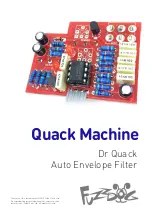
IM 12D03D02-01E
5-2
5
.
Maintenance
5.2 Washing the Electrode
Dirt or stains on the electrode may have an adverse effect on the cell constant,
thereby making accurate conductivity measurement impossible. Therefore, after
measurement, rinse the electrode in clean water (for example, tap water) to remove
stains. Even if staining is not apparent, the sensor performance may have changed. If
so, wash the electrode by moving the sensor up and down in hydrochloric acid (about
0.1 mol/l) or water with a little neutral detergent dissolved in it. [For general-purpose
and pure-water sensors: if the electrodes are difficult to clean, wipe them gently from
top to bottom with a cotton wool swab.] After cleaning the electrode, rinse it in water.
l
General-purpose sensor
(The figure below shows the general-purpose sensor with the cover removed).
Remove the cover, and wipe stains off the electrodes (inner electrode and tip
element) with a cotton swab. Rinse in a cleaning solution consisting of water
containing a little neutral detergent, to remove stains from the electrode. After
cleaning, wipe the electrode element (inner and edge electrodes) with tissue paper or
cotton wool.
Inner electrode (titanium)
Edge electrode (titanium)
l
Sensor for high-purity water measurement
Remove the reference electrode part, and wipe the electrode elements (the shaded
parts in the figure) with tissue paper or cotton wool.
Reference electrode contact
Internal electrode
Reference electrode
Cotton wool swab
*
Corrosion-resistant sensors and sensors for high-conductivity measurements
Use a beaker or the like containing water, dilute hydrochloric acid, or weak neutral
detergent; move the sensor up and down so it is immersed up to the air vent, and
wash in tap water to clean out the air vent.
















































